From medieval fortresses to 17th century palaces, the most interesting castles in Lithuania will have you feeling like royalty in no time.
Who would have thought that a small country in the Baltic States could hide so many beautiful castles? Known by some as the ‘Land of Castles’, Lithuania was once a place where knights and princesses roamed.
From the iconic Trakai Island Castle, a picturesque silhouette rising from the tranquil waters of Lake Galvė, to the imposing Kaunas Castle, strategically guarding the confluence of the Nemunas River and Neris River, Lithuania’s castles are a captivating blend of Gothic, Renaissance and Baroque styles, reflecting the country’s diverse cultural influences.
So, if you love history, and you could spend a whole afternoon exploring dungeons and towers, then that’s it…you’re going to Lithuania!
The most interesting castles in Lithuania: a short history
Lithuanian castles have a rich history, reflecting the country’s changing political and military landscapes. In ancient times, the castles were wooden hillforts, although none have survived to this day. However, many castle hills remain, some dating back to the Bronze Age. Five of these hillforts can be found in Kernavė, the former capital of the Aukštaitija region, which is inscribed as a UNESCO World Heritage site.
In addition to the traditional wooden hillforts, medieval brick castles were constructed in strategic locations along rivers and near the political heartland of the country.
Castle remains also exist in Medininkai, to the east of Vilnius, and in Klaipėda, where the castle was initially constructed by the Teutonic Knights, who were considered the archenemies of the Lithuanians at the time.
During this period, entire cities were walled – although most of the walls were destroyed in the 19th century – leaving only a few fragments you can visit today. While some castles survived, others were rebuilt to give back Lithuania its charm, closely following the Renaissance and Baroque styles.
Avid history buffs should also check out our guide to the best châteaux in Dordogne and the best castles in South Wales.
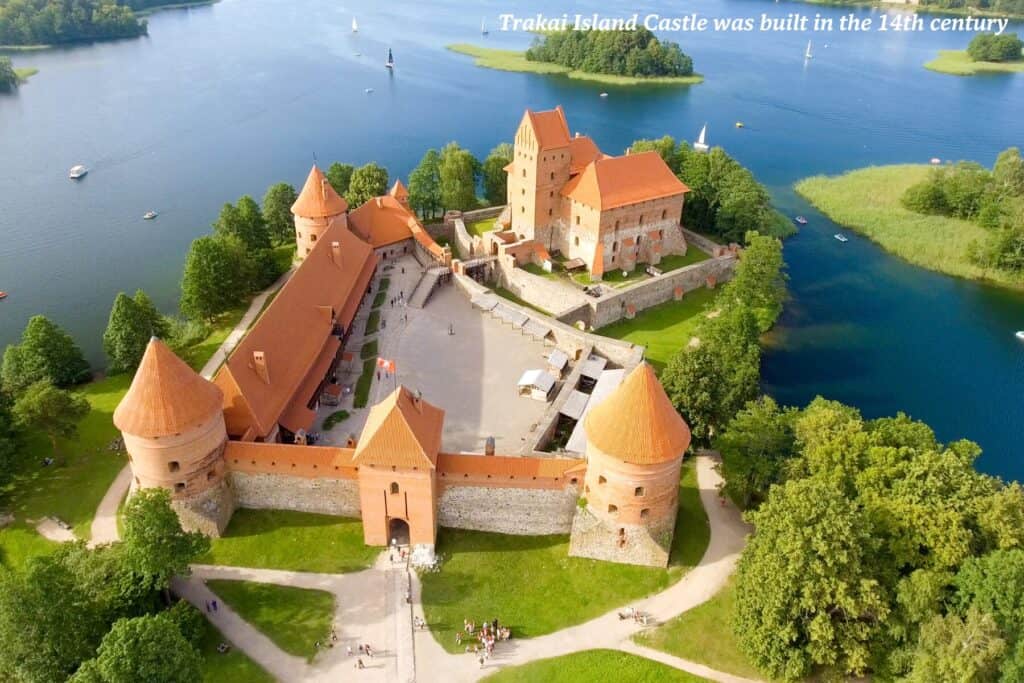
Trakai Island Castle
The first on our list, and one of the most captivating and well-preserved 14th-century medieval castles in Lithuania, is Trakai Island Castle. Situated on a small island in Lake Galvė, this beautiful castle is renowned for its strategic location and imposing presence.
Construction began in the 14th century under the patronage of Grand Duke Kęstutis and was later completed by his son, Vytautas the Great. The latter, a revered Lithuanian ruler, envisioned Trakai as a vibrant cultural hub and transformed the residential castle into a masterpiece of Gothic architecture.
Throughout its existence, Trakai Island Castle has served as a bastion of defence for the Grand Duchy of Lithuania, a royal manor, a hub of political intrigue, and a symbol of Lithuanian power. Its strategic location, surrounded by water on all sides, made it a formidable fortress, while its elegant architecture reflected the sophistication of its inhabitants.
In 1951, a major restoration project commenced in the town of Trakai, diligently reviving the castle to its former glory. Today, Trakai Island Castle is a popular tourist destination, attracting visitors from around the world. Its restored interior houses an impressive historical museum, offering a glimpse into the lives of the Grand Dukes and the rich history of Lithuania.
The castle complex also hosts a variety of cultural events throughout the year, including ancient arts and crafts days, historical evenings dedicated to Vytautas the Great, and musical festivals.
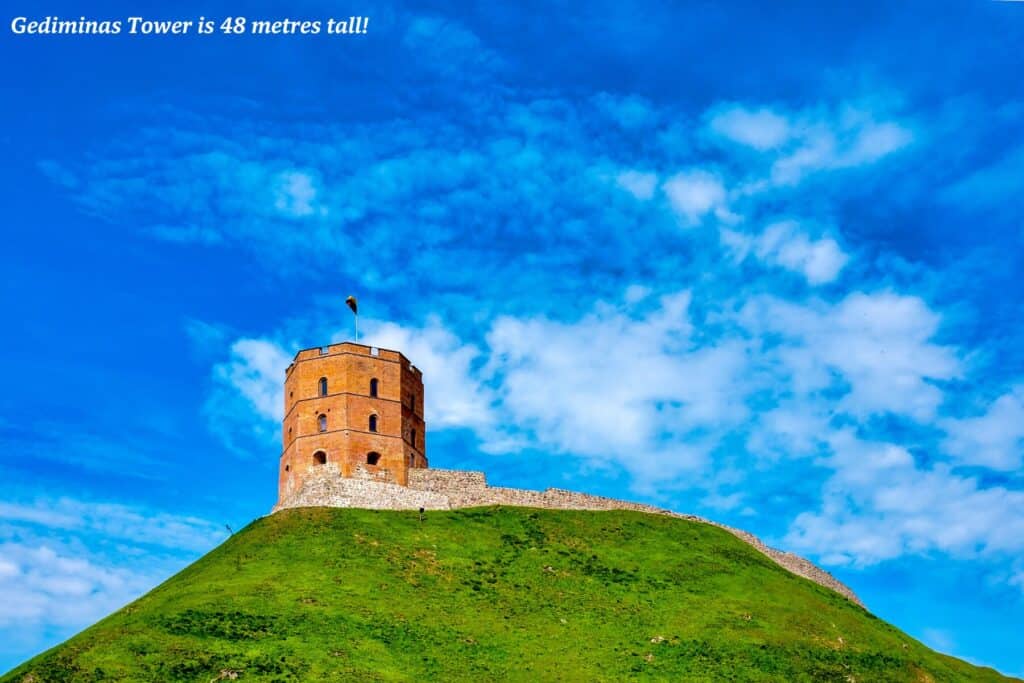
Vilnius Castle
Vilnius Castle is undoubtedly one of the most interesting castles in Lithuania. It is a beautiful and historic site that offers something for everyone. With its impressive architecture, rich history and stunning views, the residential complex is a truly unforgettable. The complex traditionally consisted of three castles: the Upper Castle, the Lower Castle, and the Crooked Castle.
The Upper Castle is the oldest part of the residential quarters and is home to the Gediminas Tower, a 48-meter-tall construction that offers stunning views of the city. The Lower Castle was the administrative centre of the Grand Duchy of Lithuania and is home to the Royal Palace and Vilnius Cathedral. Unfortunately, the Crooked Castle was destroyed by the Teutonic Order in the 14th century.
The Vilnius Castle Complex has been a symbol of Lithuanian statehood for centuries. It was the site of the coronation of many Lithuanian grand dukes and was a key defensive point in the wars against the Teutonic Order.
The complex is also home to several important historical artefacts, including the remains of the Vytautas the Great’s army and the Gediminas Pillar. We recommend taking a guided tour to learn more about the history and significance of the castle.
Medininkai Castle
Medininkai Castle is located near the Aukštojas and Juozapinė Hills, the highest peaks in Lithuania. It was built in the 14th century and has undergone restoration to preserve its medieval charm. Visitors can explore its four permanent exhibition halls, which showcase the history of the Grand Duchy of Lithuania, as well as unique archaeological findings.
Every year, on the last weekend of September, Medininkai Castle hosts the extraordinary Medininkai Castle Games. During this celebration, castle grounds seem to come to life, bringing together knights, craftsmen, artists, and countless guests from the nearby town.
The event celebrates the history of the castle itself, as well as the history of key historical figures and legends associated with it. The sounds of ancient music, ritual hymns, and altar smoke all create a special medieval atmosphere.
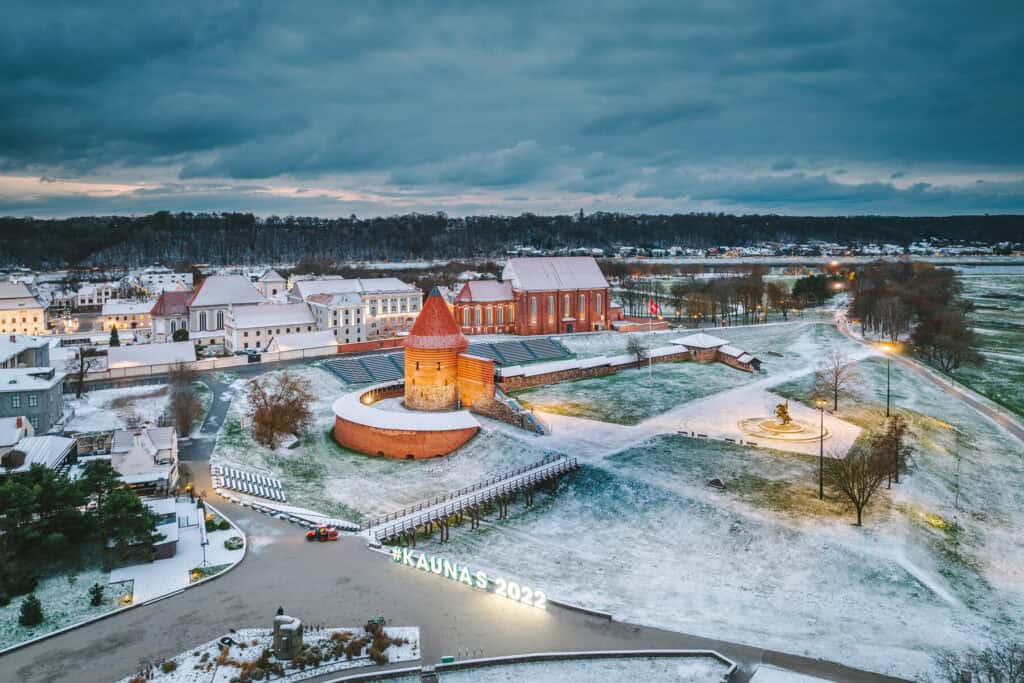
Kaunas Castle
Kaunas is one of the largest and most interesting castles in Lithuania, and a magnificent 14th-century bastion fortress standing proudly on the banks of the Nemunas River. It boasts imposing defensive walls, a large round tower, and a fascinating collection of artefacts that will transport you to medieval times.
Venture inside the castle’s main tower and discover a captivating exhibition that chronicles the castle’s tumultuous history, from its construction during the reign of Grand Duke Gediminas to its role in the Battle of Grunwald.
Delve into the lives of the people who lived and worked within these walls and uncover the stories etched into the stone of this ancient monument.
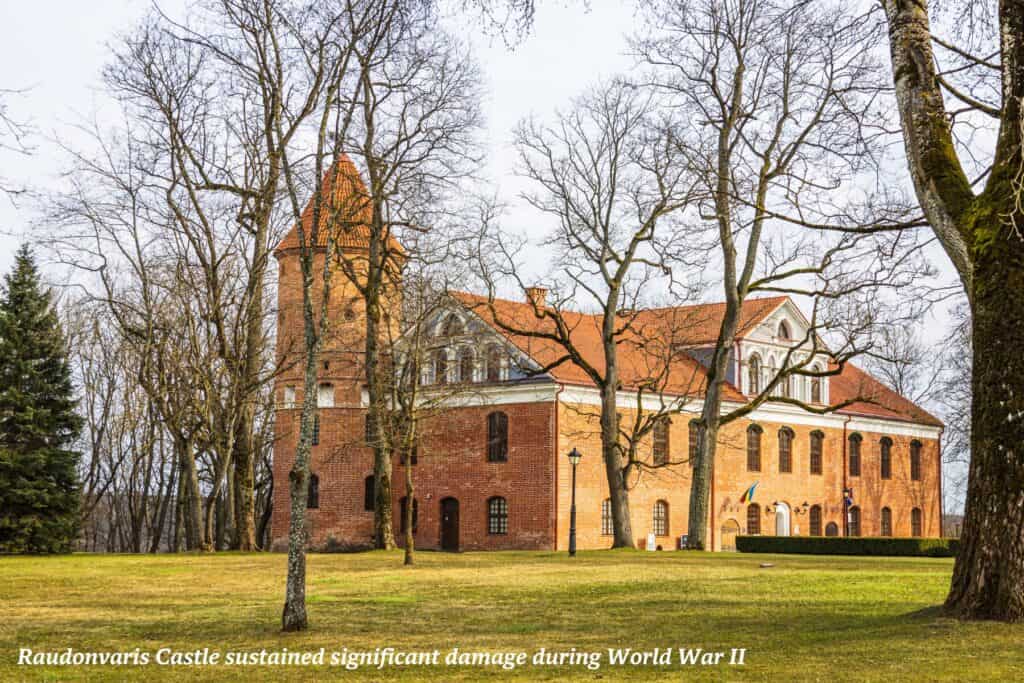
Raudonvaris Castle
Dating back to the 13th century, this captivating landmark of Eastern Europe has witnessed centuries of transformation, from a humble Teutonic stronghold to a magnificent Renaissance manor.
Raudonvaris Castle’s origins can be traced back to 1392 when Teutonic chroniclers documented its existence as a small keep. Following the Battle of Grunwald, the fortress was fortified and expanded, becoming a strategic stronghold of the Polish and Lithuanian monarchs. In 1549, King Sigismund II Augustus gifted the castle to his wife, Queen Barbara Radziwiłł, inspiring the name “Red Manor” (Czerwony Dwór) that persists today.
The Tyszkiewicz family, who held the property for over a century, amassed an impressive art collection, including works by renowned artists like Leonardo da Vinci, Rubens, Caravaggio, and Jan Matejko.
Unfortunately, the castle sustained significant damage during World War II, but the whole building has since been meticulously restored. Today, Raudonvaris Castle houses the Lithuanian Institute of Melioration and a small museum dedicated to the Tyszkiewicz family and Lithuanian composer Juozas Naujalis.
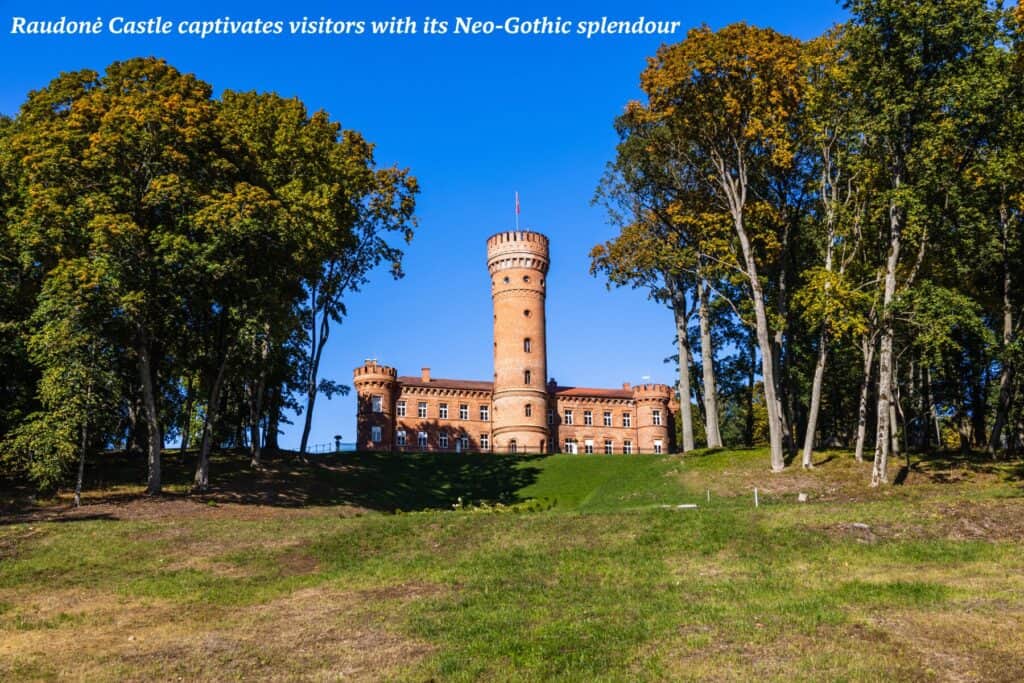
Raudonė Castle
Raudonė Castle is a captivating blend of architectural styles, rich history, and enchanting legends. Its charm has endured for over 400 years, captivating visitors with its Neo-Gothic splendour.
The castle’s genesis can be traced back to the late 16th century when a Polish king, Sigismund II Augustus, entrusted it to a German knight named Krispin Kirschenstein. Over time, the castle underwent several transformations, including a Renaissance-style reconstruction by Kirschenstein and the addition of Neoclassical elements by the Olendzki family in the 19th century.
Despite its grandeur, the castle’s history was not without its trials. The main building faced devastating damage during World War II and was eventually repurposed as a secondary school in the 1960s. However, its architectural beauty has been preserved, and the school’s students continue to benefit from the castle’s rich heritage.
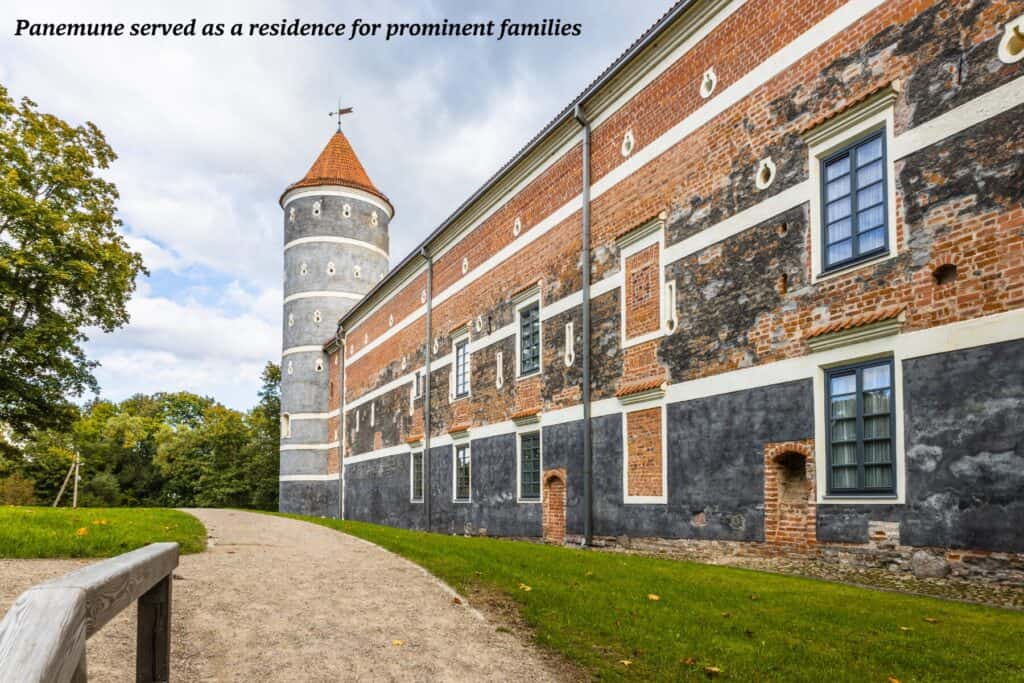
Panemune Castle
On the right bank of the Nemunas River, you will find one of the most beautiful Renaissance-style castles in Lithuania. Dating back to the 16th century, the castle served as a private residence for prominent Lithuanian families, including the Eperjesi and Gedgaudas clans.
Over the centuries, the castle, which was surrounded by defence tackle and farm buildings, has undergone numerous transformations, reflecting the changing tastes and aspirations of its owners.
Today, Panemunė Castle has been transformed into a vibrant cultural hub. It now belongs to the Vilnius Academy of Arts, and showcases a collection of Lithuanian art, while regularly hosting art exhibitions, musical performances, and traditional craft fairs.
Siesikai Castle
Located on the southern shore of Siesikai Lake, the early 16th-century Siesikai Castle boasts Renaissance architecture and features unique window and door orientations that create a mesmerizing spectacle during the solstice and equinoxes.
Over time, the residential building has absorbed elements of Baroque and Classicism, evident in its intricate floor ornaments, ceilings, and harmonious architectural layout.
The castle’s interior is adorned with mid-17th-century wall paintings depicting themes of ancient mythology and the 12-month cycle. These masterpieces, the work of Italian engraver Antonio Tempesta, only add to the ambience.
Siesikai Castle’s history is marked by illustrious owners, including the Radziwiłł family and the Daugėla family. During the 19th century, Dominykas Daugėla, the castle’s owner, renovated it in the Classicist style, enhancing its architectural grandeur.
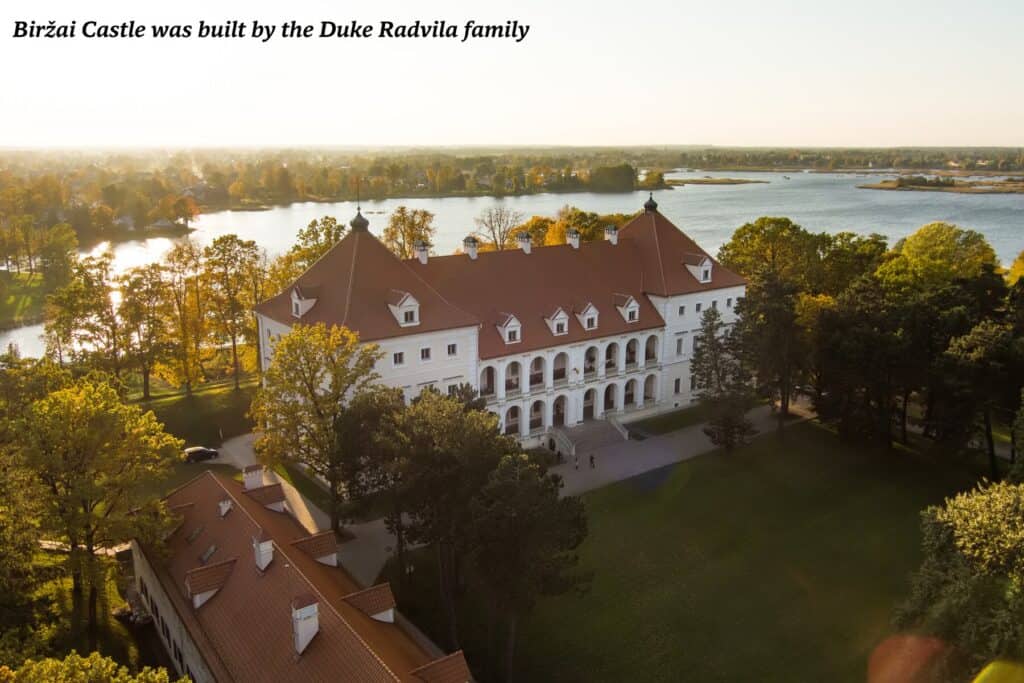
Biržai Castle
Step back in time to the 17th century and experience the grandeur of Biržai Castle, a Dutch-style fortress built by the Duke Radvila family. This impressive architectural masterpiece served as a formidable defence of Lithuania’s northern borders and now houses the Biržai Regional Museum Sėla.
As you wander through the castle’s restored palace and arsenal, you’ll encounter artefacts that chronicle the fascinating lives of the Selonian and Semigalian tribes, the Radziwill dukes, and the Tyszkiewicz counts. Delve into the region’s brewing traditions, learn about life in Biržai from the 18th to the 20th century, and witness an interactive warfare exhibition.
The castle museum’s stunning collections include ancient artefacts, ethnographic exhibits, a religious history display, and a captivating showcase of Biržai and the Radziwill family.
Interest piqued? Lithuania is also on our list of the best places to travel in 2024!
More information
Travel from the UK to Lithuania typically involves daily direct flights from London airports (London City, Stansted or Luton) to Vilnius and Kaunas Airports. The flight duration averages around 2.5 to 3 hours.
For more information about the best beaches in Lithuania, see Lithuania Travel.
